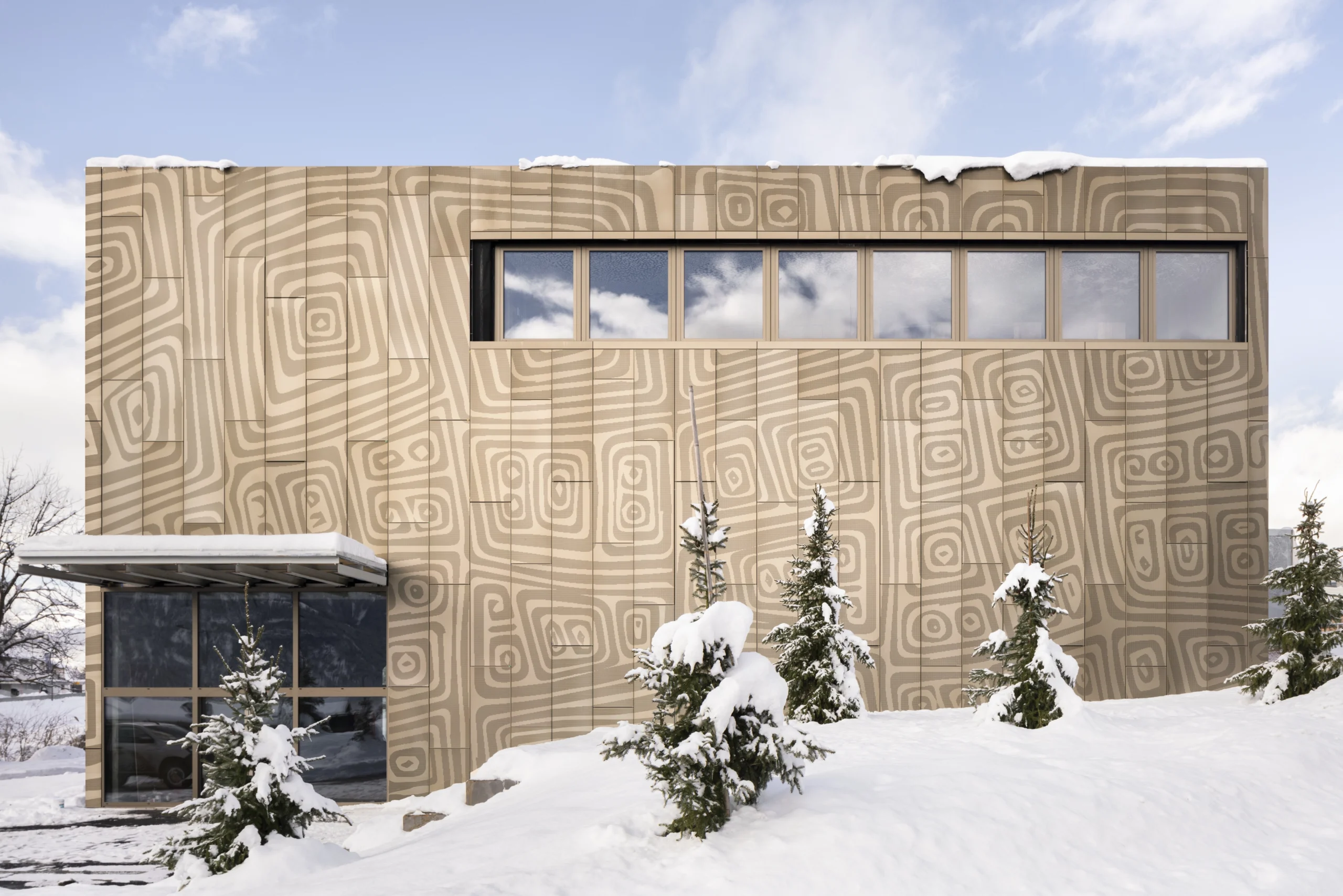The site
Architecture
Fondation Opale building blends harmoniously into the Alpine landscape. Architect Jean-Pierre Emery rose to the challenge of introducing contemporary architecture without altering the site’s natural landscape with an art center of understated beauty. The mirrored facade, made of photovoltaic panels, disappears to let the landscape reflect, creating a trompe-l’œil effect, a real interplay between culture and nature. The building’s green roof offers a view of Lac du Louché and the surrounding Alpine landscape.
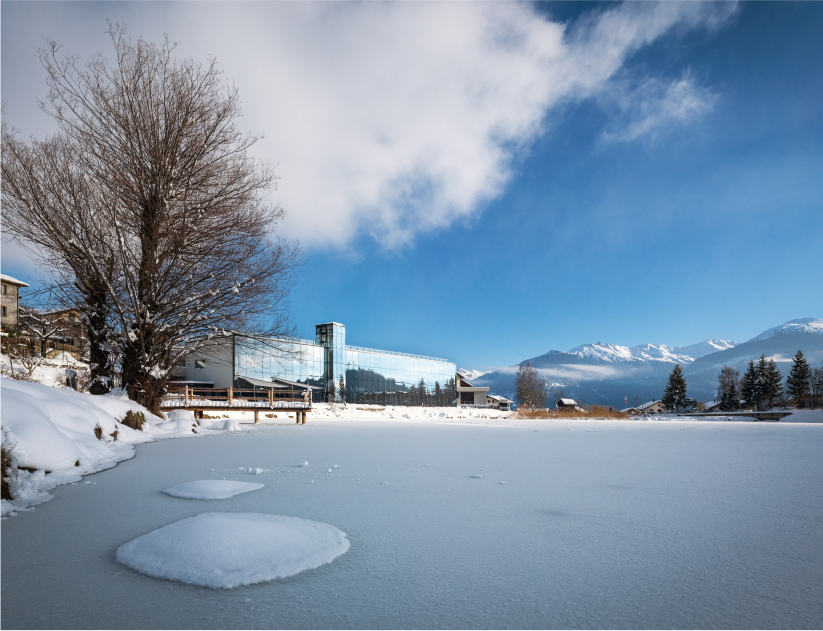
Since December 2023, Fondation Opale has extended its visitor facilities to include a 124-seat auditorium, a media library – a resource center for contemporary Aboriginal art, where archives, books, videos and audio recordings can be consulted – a storeroom for works from the Collection Bérengère Primat and other works on loan for the exhibitions, as well as a meeting room. The new wing was designed by évéquoz ferreira architects, Sion.
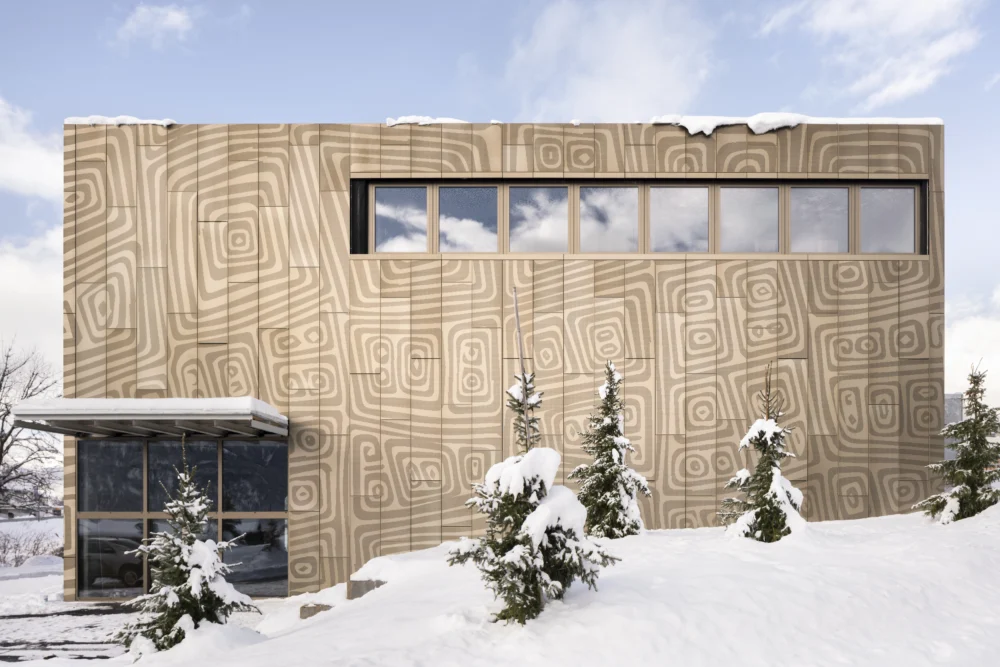
Permanent works
Galalan - Darrell Sibosado
Darrell Sibosado’s sculptural installations can be traced back to the traditional designs on Riji – or etched pearl shells – of the Bard people in Western Australia’s Kimberley region. This installation is the artist’s tribute to the story of Galalan, the first Bard Creator Ancestor that took human form. Galalan gave men the Law and taught them how to manage and share the resources in Bard Burr (Bard Country).
When he saw evidence of greed – people taking too much, not harvesting in the right season or place and not distributing resources properly according to kinship and status – Galalan became angry with the Bard. He created rivers and streams to channel the water from the lakes to the ocean, where he released all life to make it harder to get.
The people retaliated and tracked him to Gumiri (a sacred billabong), where he was speared and thrown into the sea at Barrinjbarr. He drifted as Loolool (hammerhead shark man) until he was sang into the sky to form part of Oongoonorr (the Milky Way) in the Baagaranjara (where those without bodies live). He is the dark and light places in the Milky Way from Alpha Centauri to Antares.
Darrell Sibosado (1966)
Bard & Noongar peoples
Galalan, 2023
Corten steel
Picture credit: Nicolas Sedlatchek
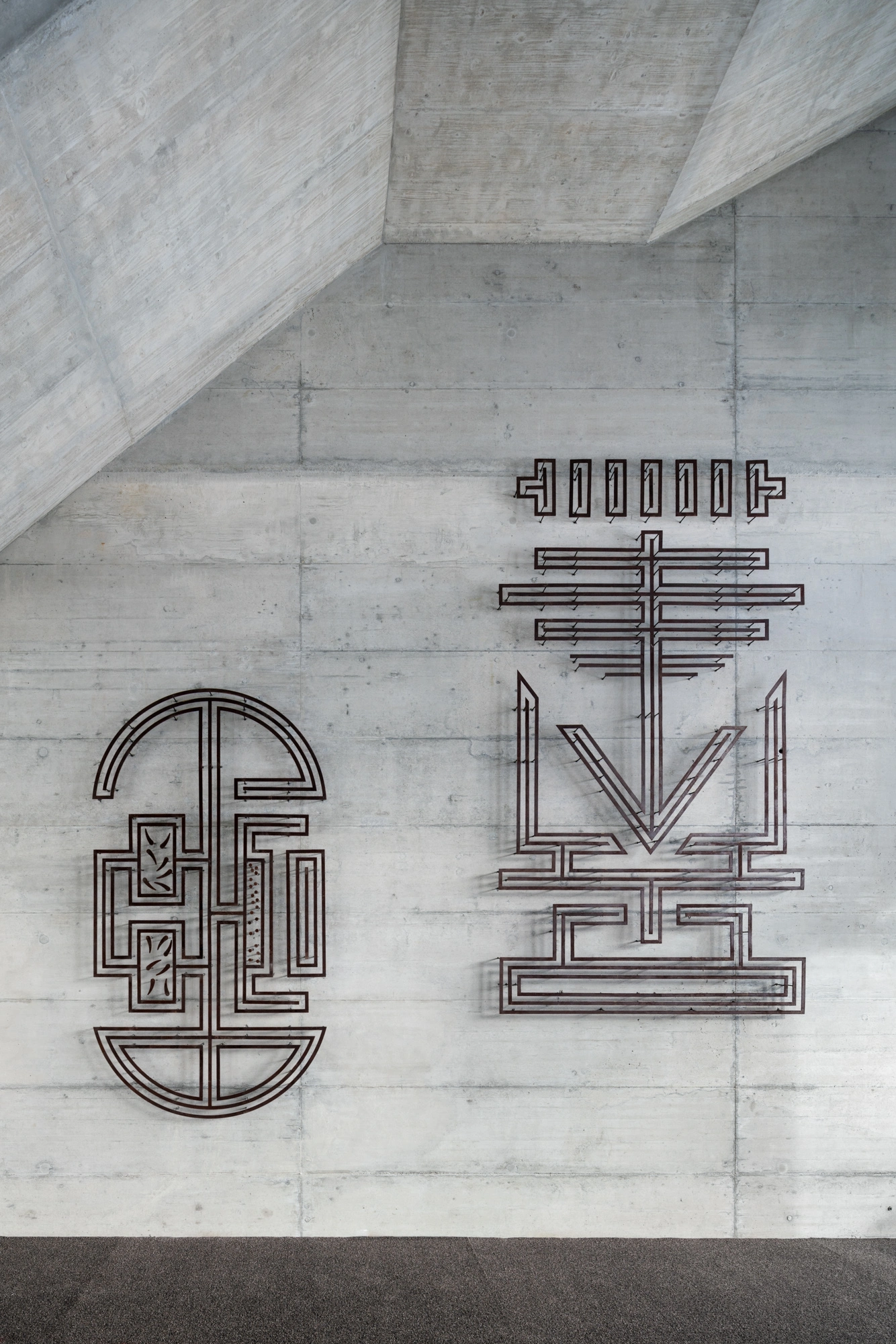
Shadow creeper - Yhonnie Scarce
Yhonnie Scarce is an artist with Kokatha, Nukunu and Mirning heritage that mainly works with glass. Her art is informed by the effects of colonisation on Indigenous Australians, and in particular in her home country in South Australia. Woomera, the place where Yhonnie Scarce was born, served as a basis for British-Australian nuclear tests during 1956 to 1963.
Shadow creeper comprises approximately 800 individually hand-blown black, iridescent and transparent organic glass yam forms that were produced in partnership with Ikon Gallery (Birmingham) and University of Wolverhampton, as part of the artist’s residency.
These glass “raindrops” in the shape of yams – the tubers that were the main food of the Indigenous communities living where the nuclear tests were carried out – potently evoke the crystallisation of desert sand as a result of these blasts. The aesthetic qualities of the material merge with the political nature of the work. Shadow creeper was presented at the Palais de Tokyo in Paris for the Reclaim the Earth exhibition in 2022.
Yhonnie Scarce (1973)
Kokatha, Nukunu & Mirning peoples
Shadow creeper, 2022
Hand blown glass, stainless steel and reinforced wire
Picture credit: Nicolas Sedlatchek
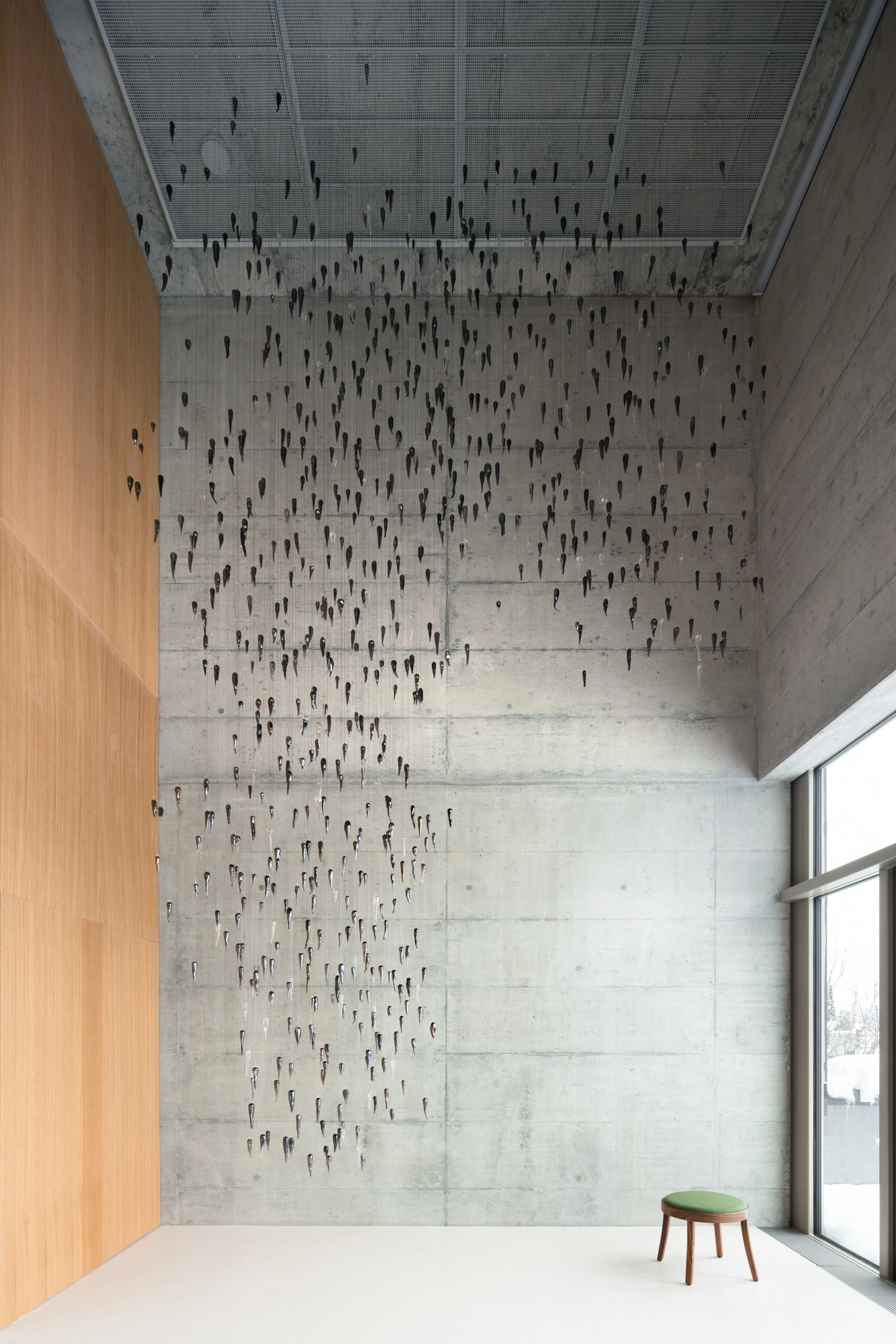
Walala Tjapaltjarri
Walala Tjapaltjarri is one of the last Aboriginal people who have lived a traditional life. He and his family joined modern society in 1984 by walking out of the Gibson Desert 800 km from Alice Springs, where they lived reclusely, as nomads perfectly mastering the complexity of their harsh environment. Two years later, he started to paint by reproducing images of the Tingari cycle, sacred songlines that relate to Ancestors of the Dreaming shaping the landscape of the region, to Law on initiation and to patterns painted on the body during eponymous ceremonies. In the late 1990s, he developed his own artistic vocabulary, a rhythmic and powerfully graphic abstraction of traditional Pintupi motifs.
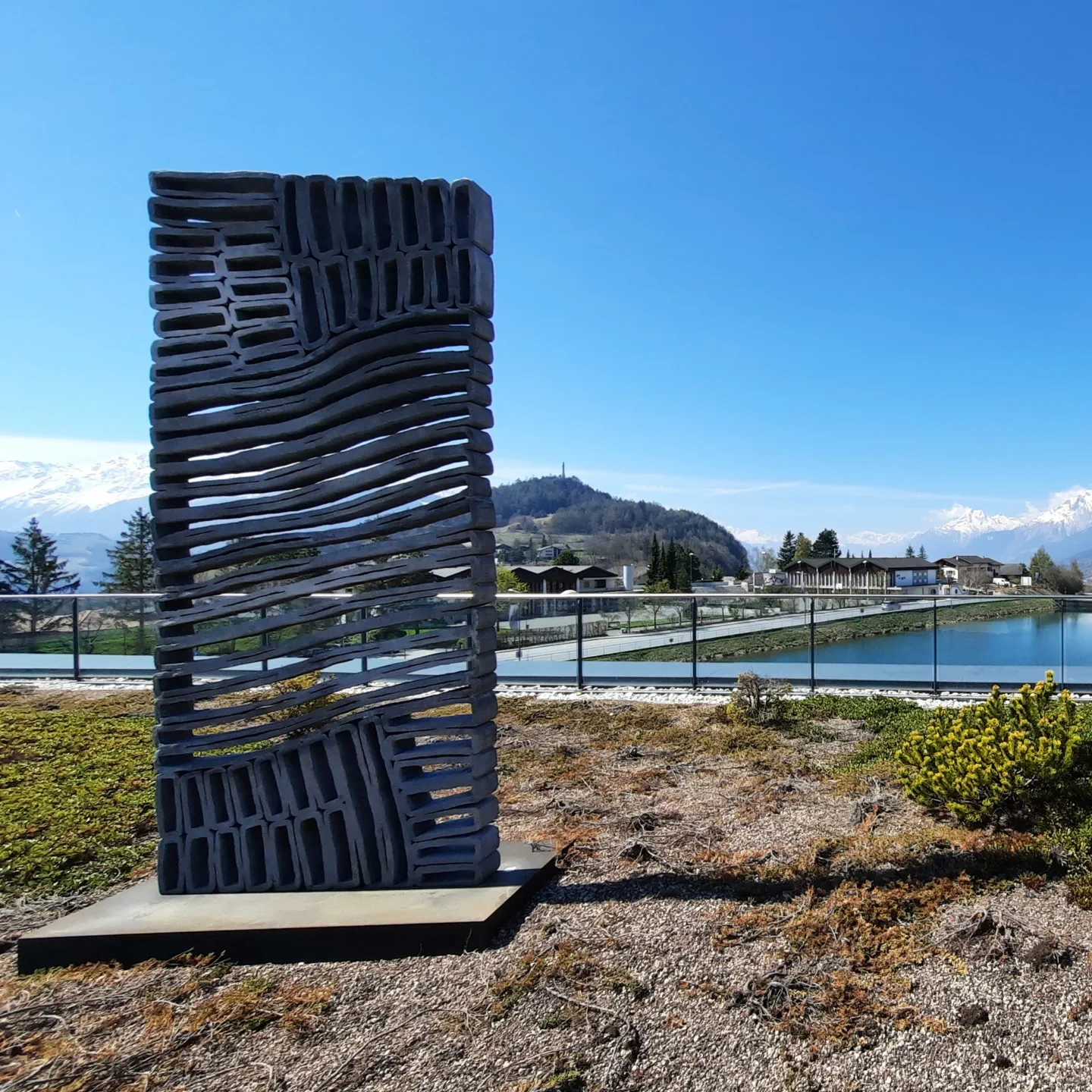
Le Cube - Etienne Krähenbühl
Born in 1953 in Vevey (Switzerland), Etienne Krähenbühl is a sculptor interested
in the traces time leaves in the matter. Situated between art and science, philosophy and poetry, his approach is “on the lookout for natural phenomena, tuned to the great existential questions and in search of a poetic sublimation of the matter” (F. Jaunin).
Picture credit : Nuno Ferreira

